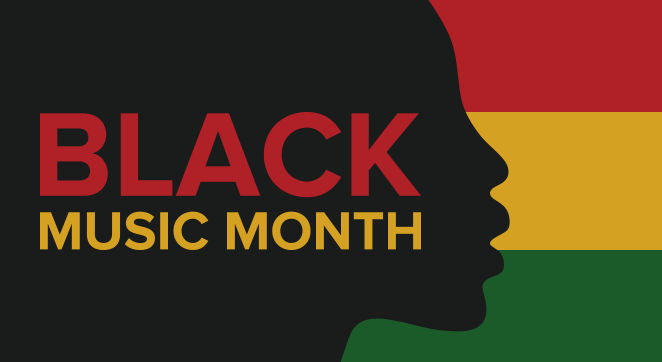Celebrating Black Music Appreciation Month
Written by SAFE
Join us as we celebrate Black Music Appreciation Month! Following our guiding principals—which include celebration, diversity, and inclusiveness—we’d like to share a series of celebratory (and informative) references to the history of Black music in America.
Influences on Black music in America
To really understand the impacts and influence of Black music, we must start with the spiritual, often said to be the epicenter of music in this country as we know it. Our hope is, that throughout this journey, you will see the connections to contemporary musical genres and the Black experience that you may not have ever thought about. There are links attached to some of these musical references, so please take some time to listen to the content.
And so we begin with the Negro Spiritual…
African-American spirituals, usually with a religious theme, were originally monophonic and a capella and were the precursors to what we know as The Blues. The African-American spiritual, negro spiritual, jubilee and African-American folk song all describe the same music. Spirituals often were an expression of religious devotion as well as catharsis for repressed emotion and the yearning for freedom from bondage.
In addition, these songs were believed to have included coded messages between slaves as a way of communicating the time for escaping bondage. Some examples are Swing Low, Sweet Chariot, which contained oblique reference to the Underground Railroad, and Wade in the Water, which included instructions on leaving dry land and heading to bodies of water as a way of throwing off the scent of bloodhounds on their trail. Another example is Follow The Drinking Gourd, which was an Africanized reference to the Big Dipper constellation, which pointed the way to the North Star and freedom.
One of the most identifiable traits of the negro spiritual was call and response—when the lead sings the first line and it is repeated by a chorus. These songs were melancholic and full of passion, sorrow, and soul. Songs could be slower and sung in a lower tone, as well as fast and more rhythmic.
Dance was also incorporated into the slaves’ musical and religious experience. The Ring Shout, derivative of the African Circle Dance, incorporated hand clapping, foot stomping, and a counterclockwise shuffle of movements and gestures in a circle with the main performance within the center of the circle.
Ring shouts were often included in worship services. Many suggest this be synonymous with catching the “Holy Ghost” or a spiritual possession by “God” (before and after their conversion to Christianity).
As one of our staff explained: “I personally remember being in church growing up and experiencing such excitement to see everyone getting up from their chairs and joining in the song, dance, and praise. It was my first connection to music, where, before sports, I became attached to the drums, tambourine, and cowbell and joining in what I now appreciate to be the ring shout or just randomly dancing up and down the aisles during this portion of the service. The praise service where I came from lasted a good hour and a half before and after the sermon, although traditionally this would occur after the service or after a day of labor for slaves.”
Thank you for reading. We hope you found this informative and fulfilling. And if you did, we hope you feel empowered to dig deeper and research more of this excellent history.